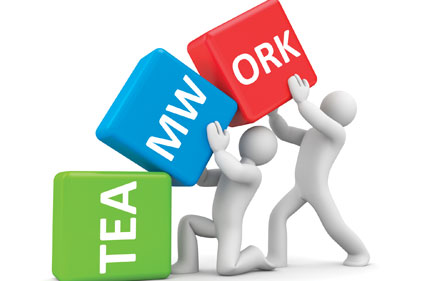It isn’t easy to put a price on a worker’s health and safety, but if we had to, it would be this: $1 billion. That is the amount U.S. employers pay every week in direct workers’ compensation alone, according to OSHA. With a sum like that, one can say workers’ safety is a prized commodity.
So, why not actually reward safe workers for their practices? I am speaking of gamification, the use of contests or game-play elements to inspire desired behavior among employees. In other words, it’s playing a game in a place or context where we wouldn’t necessarily do so.
Following are some case studies that illustrate positive results that can come from applying gamification to workers’ health and safety.
Case STUDY #1: Sharing a bucket of rewards
One of the foundational requirements of safety is accountability. The challenge is sharing it across the organization, as one mid-sized custodial staffing company found. The solution leverages the power of teamwork to foster safety incentives.
The application is straightforward: At the beginning of the year, the administrator authorizes a sum of points to put into a “bucket” to be used for rewards at the end of the year. This bucket is then displayed on the homepages of the custodians participating in the safety incentive program. Providing there are zero lost-time accidents at the end of the year, the total amount of points initially placed in the rewards pot are divided, as rewards, evenly among participants. If any lost-time accident does occur, a portion of the points is deducted from the bucket. Whatever points remain at the end of the year will be divided evenly.
By holding every employee within the organization accountable for the actions of the entire group, and also by rewarding the entire group for a stellar safety record, the company has encouraged all workers to support one another and to speak up if unsafe behavior is observed.
Case Study #2: Team-based performance
Gamification may also be applied in teams, literally. In 2009, a regional electrical company wanted to instill a culture of safety awareness within its road crew teams. A web-based rewards program portal was designed that monitored individual employee and team safety records. But instead of road crew teams, the program was designed around football teams, each of whose individual performance was measured against defined goals. Each crew member, or player, could jump on to the portal to monitor the progress of not only his or her own individual safety records, but also of the team as a whole. Teams that achieved their safety targets for the quarter received an equal amount of reward points per individual. The rewards program also empowered each team to customize its program with its own team name, assigned leader, and team icon or logo, all in an effort to cultivate team spirit among everyone participating.
Case Study #3: Maintaining an incident-free record
PCS Phosphate Co., a maker of ingredients used in fertilizers, livestock feed and industrial applications, was proud of its good safety track record but wanted to ensure it would continue to operate incident-free. So in 2011, recognizing that its employees were the only ones truly capable of helping the organization achieve that goal, PCS ran a program to inspire workers to maintain their already spotless record.
Having had no reported incidents, PCS realized the most cost-effective way to do this was to spend a little extra on each employee to prevent incidents, rather than potentially pay the costs after any such incident. PCS determined that each employee who had an incident-free month would be rewarded with so many dollars. The staff was divided into teams, a strategy that encouraged them to think more creatively about how to avoid accidents. The team aspect also added to the competitive nature of the incentive program, generating additional excitement among the employees, which improved morale.
Case STUDY #4: Rewarding safety education
While the goal of workplace gamification is to inspire desired behaviors, it also can be applied as a fun and rewarding way to learn about company safety policies and hazard prevention techniques.
For example, more companies are inviting employees to take online quizzes based on material that was presented in annual safety training classes. After successfully completing a quiz, employees then earn virtual tokens within their individual rewards account, located on the safety incentive program’s website. Recipients of these virtual tokens can “redeem” them to play an online game on the rewards program website for a chance to win a prize instantly.
The goodness of gamification
Whether as a means of rewarding employees for educating themselves about occupational safety or rewarding them for working together to prevent safety incidents, gamification is being successfully implemented. And as I said, there are at least one billion reasons to use it.
Incentives traditionally used to promote customer loyalty, especially those such as gamification, are finding their way to good use inside our organizations, not only rewarding desired outcomes within our employees, but more importantly, protecting these valuable employees from harm.
Editor’s note: As with all safety incentive programs, make certain employees are not hiding injuries or failing to report incidents in order to win rewards.






